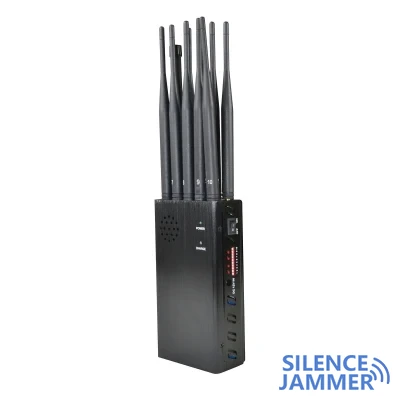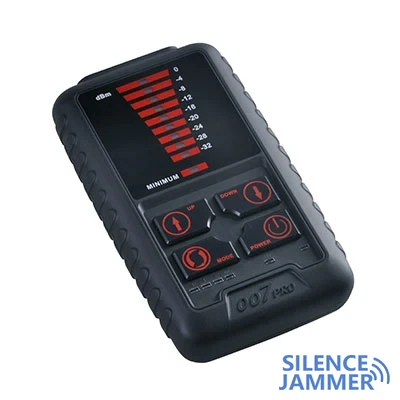The Global Positioning System (GPS) plays an integral role in modern life. However, the GPS signal is very weak and susceptible to various interferences, especially linear sweep interference of signal jammer. This interference signal interferes with the GPS receiver by continuously changing the frequency within a certain frequency range, resulting in increased positioning errors and even signal loss. This article will introduce in detail the principle of linear sweep interference and its impact on GPS signals, and explore several effective interference suppression methods.

The principle of linear sweep interference
1. Interference characteristics
Linear sweep interference is an interference signal whose frequency changes linearly with time. Its basic features include:
- Frequency range: The interference signal covers a certain frequency range, usually including the frequency band where the GPS signal is located.
- Sweep rate: the rate at which the interference signal frequency changes, which can be fixed or variable.
- Duration: Interference signal duration can be instantaneous or continuous.
2. Impact on GPS signals
Linear sweep interference causes interference to the receiver's phase-locked loop (PLL) and code tracking loop (DLL) by changing frequencies within the GPS signal band, causing the following problems:
- Phase lock failure: The receiver cannot correctly lock the GPS signal, resulting in positioning failure.
- Code tracking error: Interference signals affect the accuracy of the code tracking loop, resulting in increased positioning errors.
- Signal loss: Strong interfering signals may cause the receiver to completely lose the GPS signal.
Linear sweep interference suppression method
1. Adaptive filtering technology
Adaptive filters can automatically adjust filter parameters according to changes in input signals to suppress interference signals. Common adaptive filters include:
- LMS (least mean square) filter: adjusts the filter weight by minimizing the mean square error, effectively suppressing linear sweep interference.
- RLS (Recursive Least Squares) filter: Minimizes the error recursively, with faster convergence speed and better suppression effect.

2. Time-frequency analysis technology
Time-frequency analysis technology can analyze signals in the time and frequency domains simultaneously to identify and separate interference signals. Commonly used time-frequency analysis methods include:
- Short-time Fourier transform (STFT): Obtains the time-frequency representation of the signal by segmenting the signal and performing Fourier transform.
- Wavelet transform: Using wavelet basis functions to conduct multi-scale analysis of signals, it can effectively identify linear sweep interference.
3. Spectrum reconstruction technology
Spectrum reconstruction technology improves signal quality by restoring interfered spectrum information. Specific methods include:
- Spectrum interpolation: Use the uninterrupted spectrum information to interpolate and reconstruct the interfered part.
- Spectrum compression: Reduce the impact of interference by compressing the signal spectrum into an uninterrupted frequency band.
Interference signal identification and elimination
Utilize advanced signal processing algorithms to identify and eliminate interfering signals. Methods include:
Interference signal modeling: Establish a mathematical model based on the characteristics of the interference signal to separate and eliminate the interference signal.
- Signal separation algorithms: such as independent component analysis (ICA) and blind source separation (BSS), can separate GPS signals and interference signals from mixed signals.
Application of Linear Sweep Interference Suppression
1. Military and aviation fields
In the military and aviation fields, the reliability of GPS navigation is crucial. By using the above interference suppression technology, the anti-interference ability of the navigation system in complex environments can be improved and positioning accuracy and reliability can be ensured.
2. Civil and industrial applications
In civil and industrial applications, linear sweep interference may also affect GPS equipment. Through effective interference suppression, the performance of GPS devices in various environments can be improved, ensuring the stability of applications such as vehicle navigation and logistics tracking.
3. Scientific research and technology development
For scientific researchers and engineers, in-depth research and development of interference suppression technology can promote the development of GPS technology, improve its anti-interference performance, and expand its application scope.
Linear sweep interference poses a serious challenge to the stability and reliability of GPS signals. However, through technologies such as adaptive filtering, time-frequency analysis, spectrum reconstruction, and interference signal identification and elimination, interference can be effectively suppressed and the anti-interference capability of the GPS system can be improved. In the future, with the continuous advancement of technology, these methods will be further optimized to provide more reliable guarantee for GPS navigation.


